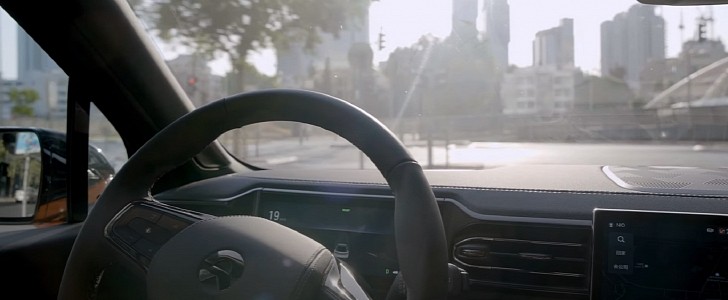Intel’s subsidiary Mobileye recently revealed its all-electric, self-driving robotaxis, at the IAA Mobility event in Munich. This was no random presentation though, as the company plans to introduce its autonomous taxis in the Bavarian city starting next year.
Mobileye partnered with mobility service provider SIXT to make that happen, with the latter being headquartered in Munich. The self-driving robotaxis will be part of SIXT’s ride-hailing service and customers will be able to access the service through the Moovit or SIXT apps. Mobileye will provide the robotaxi fleet, while SIXT will maintain and operate it.
Clients will be able to tell apart the regular ride-hailing cars from the autonomous ones by looking for the MoovitAV and SIXT branding on the vehicles.
Earlier this year, Germany passed the first federal law in the world to allow autonomous driving in regular traffic, and Mobileye’s vehicles are permitted to go up to more than 80 mph (130 kph), as stated by Jack Weast, vice-president of autonomous vehicle standards for Mobileye, interviewed by Reuters. There are of course some requirements to be met, with the vehicles only being allowed in the set areas and with a human remotely supervising the robotaxis.
Mobileye’s self-driving cars were produced by Chinese manufacturer NIO and there will initially be 50 autonomous vehicles deployed in Munich. The company hopes to grow that number by the end of 2022 and implement its technology all over Germany. Other European countries will follow during the next years.
The autonomous vehicles are six-passenger cars equipped with 13 cameras, three long-range LiDARs, six short-range LiDARs, and six radars.
Intel’s robotaxis are not the only ones being promoted these days by tech companies. Yandex, another giant that is Russia’s top alternative to Google, is also trying to get a slice of the pie. The company recently announced its intention to bring robotaxis to Moscow, even though it initially plans to begin its public trial in just a district and for a limited number of registered customers.
Clients will be able to tell apart the regular ride-hailing cars from the autonomous ones by looking for the MoovitAV and SIXT branding on the vehicles.
Earlier this year, Germany passed the first federal law in the world to allow autonomous driving in regular traffic, and Mobileye’s vehicles are permitted to go up to more than 80 mph (130 kph), as stated by Jack Weast, vice-president of autonomous vehicle standards for Mobileye, interviewed by Reuters. There are of course some requirements to be met, with the vehicles only being allowed in the set areas and with a human remotely supervising the robotaxis.
Mobileye’s self-driving cars were produced by Chinese manufacturer NIO and there will initially be 50 autonomous vehicles deployed in Munich. The company hopes to grow that number by the end of 2022 and implement its technology all over Germany. Other European countries will follow during the next years.
The autonomous vehicles are six-passenger cars equipped with 13 cameras, three long-range LiDARs, six short-range LiDARs, and six radars.
Intel’s robotaxis are not the only ones being promoted these days by tech companies. Yandex, another giant that is Russia’s top alternative to Google, is also trying to get a slice of the pie. The company recently announced its intention to bring robotaxis to Moscow, even though it initially plans to begin its public trial in just a district and for a limited number of registered customers.







